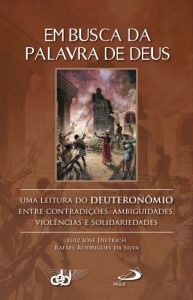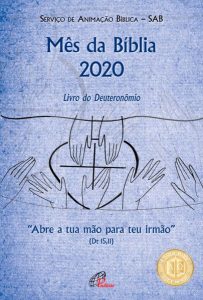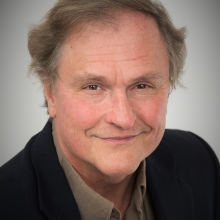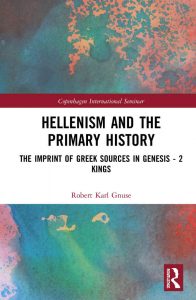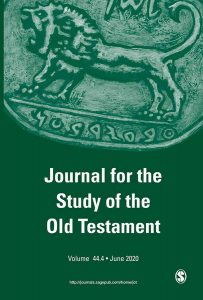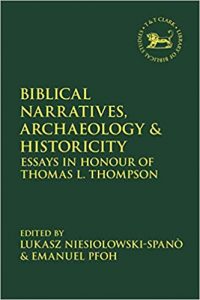Foi o alemão W. M. L. de Wette quem, em 1805, sugeriu que o “livro da Lei” (sêfer hattôrâh), como se lê em 2Rs 22,8, que impulsionou a reforma de Josias no século VI a.C., deveria corresponder ao Deuteronômio, ou, pelo menos, a uma forma mais primitiva deste livro. Mas, mais importante ainda foi a sua conclusão de que este Deuteronômio original foi composto na época de Josias, guardado no Templo de Jerusalém e, em seguida, utilizado como documento de propaganda para a reforma deste rei.
De lá para cá esta tem sido a opinião dominante sobre a identidade do “livro da Lei”, embora não exista acordo entre os especialistas sobre a data do escrito original, sobre a identidade de seus autores e nem sobre o número de reedições pelas quais o livro do Deuteronômio passou. Alguns defendem sua origem em Israel, antes da queda de Samaria em 722 a.C., nos meios levítico-proféticos, outros sua primeira redação por refugiados (levitas?) do reino do norte vindos para Jerusalém na época de Ezequias (716/15-699/8 a.C.), outros, ainda, sua escrita na época de Josias (640-609 a.C.) por escribas reais… Só existe relativo consenso quanto ao seu conteúdo: o Deuteronômio original compreenderia os capítulos 12,1-26,15 – um código de leis – ornamentados por uma introdução, os atuais capítulos 4,44-11,32, e uma conclusão, os capítulos 26,16-28,68.
O que é importante: Dt 12-26 agrupa o mais significativo conjunto de leis do antigo Israel. Para uma discussão sobre a época e a motivação do código, recomendo:
. O contexto da Obra Histórica Deuteronomista – Ayrton’s Biblical Page – Última atualização: 12.01.2022
. A descoberta do Livro da Lei na época de Josias – Observatório Bíblico: Publicado em 27.01.2007 – Atualizado em 11.02.2020
. O Código Deuteronômico seria pós-josiânico? – Observatório Bíblico: Publicado em 15.09.2009 – Atualizado em 23.03.2020
Costumo fazer com os estudantes de Teologia, em minhas aulas de Literatura Deuteronomista, uma leitura comentada dos principais elementos deste código. Vou transcrevê-los abaixo. Estão agrupados por assunto: economia, política e religião. Mas lembro que isto é apenas um roteiro de leitura, e os dados provavelmente não estão completos, especialmente por falha nas citações.
Levantamento de dados do Código Deuteronômico (Dt 12-26)
Economia
1. A terra
. é dada por Iahweh a Israel: 12,1.9.10.20.29;13,13;16,5.18.20;17,14 etc
. não mudar os limites das propriedades: 19,14
. a herança e o direito de primogenitura: 21,15-17
2. A agricultura e a natureza
. a proteção das árvores: 20,19-20
. a semeadura da vinha: 22,9
. a aração: 22,10
. a respiga: 24,19-22
. comer na plantação do próximo: 23,25-26
3. A pecuária e a caça
. a alimentação (de carne): 12,15-16.20-25;14,3-21;15,21-23
. animais extraviados: 22,1-4
. pássaros: 22,6-7
4. O trabalho
. do assalariado: 24,14-15
. de um escravo por dívida: 15,12-18
5. As riquezas
. o rei não deve multiplicá-las excessivamente: 17,17
6. O comércio, as dívidas e os empréstimos
. pesos e medidas: 25,13-16
. empréstimos e penhores: 24,10-13
. empréstimos com/sem juros: 23,20-21
. penhores: 24,6.17
. a remissão das dívidas a cada 7 anos: 15,1-11
7. Os pobres
. a ajuda ao necessitado: 15,1-11
. os levitas vivem das ofertas cultuais: 18,1-8
8. A casa
. as casas devem ter parapeito no terraço: 22,8
9. As vestes
. não misturar linho e lã: 22,11
. fazer borlas nas 4 pontas do manto: 22,12
Política
10. O rei
. deve ser israelita, não pode acumular riquezas, cavalos ou mulheres em excesso e deve obedecer estritamente à Lei: 17,14-20
11. Os juízes e a administração da justiça
. a lei do talião: 19,21
. a suspensão de um morto: 21,22-23
. o vingador de sangue: 19,6.12
. o sequestro: 24,7
. as cidades de refúgio e o homicida: 19,1-13
. os juízes levitas: 17,8-13
. juízes e escribas justos em cada cidade: 16,18-20
. a defesa do direito do estrangeiro, do órfão e da viúva: 24,17-22
. as testemunhas: 17,6-7;19,15-21
. o açoite: 25,1-3
. o caso do homicida desconhecido: 21,1-9
. a pena de morte é aplicada nos casos de:
– profeta que prega idolatria: 13,2-6
– parente que prega idolatria: 13,7-12
– qualquer um que pregue idolatria: 13,13-19;17,2-7
– desobediência ao tribunal supremo: 17, 8-13
– profeta que fala em nome próprio: 18,15-22
– homicídio com premeditação: 19,11-13
– filho rebelde: 21,18-21
– jovem que não se casa virgem: 22,20-21
– adultério: 22,22-27
– sequestro: 24,7.
12. Os levitas
. não têm propriedades (terras): 12,12;18,1-8
. não devem ser esquecidos: 12,19;14,27;18,1-8
. têm direito ao dízimo trienal: 14,28-29;18,1-8;26,12-15
. são juízes de causas difíceis: 17,8-13
13. Os profetas
. o profeta idólatra deve ser morto: 13,2-6
. o profeta verdadeiro é porta-voz de Iahweh e sucessor de Moisés: 18,15-22
14. Os povos estrangeiros e a guerra
. as nações conquistadas/destruídas/dominadas: 12,2.29;15,6;18,4;19,1
. seus deuses e suas práticas cultuais devem ser evitadas a todo o custo: 12,2-3.29-31;18,9- 12.14
. a guerra e o anátema: 20,1-20
. a pureza no acampamento: 23,10-15
. o edomita e o egípcio devem ser bem tratados: 23,8-9
. o amonita e o moabita não podem entrar na assembleia cultual: 23,4-7
15. A família
. os antepassados: 12,1;19,14;26,5-9
. os familiares idólatras devem ser mortos: 13,7-12
. o direito de primogenitura: 21,15-17
. virgindade e casamento: 22,13-21
. adultério e relações sexuais: 22,22-23,1
. divórcio: 24,1-4
. o recém-casado: 24,5
. o levirato: 25,5-10
. a culpabilidade de pais e filhos: 24,16
16. O homem
. não pode usar roupas femininas: 22,5
. castrado não pode participar das assembleias cultuais: 23,2
. bastardo não pode participar das assembleias cultuais: 23,3
. o prostituto sagrado israelita: 23,18-19
17. A mulher
. a viúva tem direito ao dízimo trienal: 14,28-29;26,12-15
. a mulher que interfere numa briga do marido: 25,11-12
. a prisioneira de guerra: 21,10-14
. não pode usar roupas masculinas: 22,5
. a prostituta sagrada israelita: 23,18-19
18. A criança
. o órfão tem direito ao dízimo trienal: 14,28-29;26,12-15
. o filho rebelde deve ser morto: 21,18-21
19. O estrangeiro (ger)
. tem direito ao dízimo trienal: 14,28-29;26,12-15
20. O escravo
. por dívida, deve ser libertado no sétimo ano: 15,12-18
. fugitivo: 23,16-17
21. A doença
. a lepra: 24,8-9
Religião
22. O culto javista
. somente no local que Iahweh escolheu: 12,4-5.13-14.17-19.21.26-28 etc
. as festas: Páscoa/Ázimos: 16,1-8
. Semanas: 16,9-12
. Tendas: 16,13-15
. as três juntas: 16,16-17
. os sacrifícios: holocaustos, sacrifícios, dízimos, dons etc: 12,6-7.11-12
. o sacrifício dos primogênitos do gado e do rebanho: 15,19-23
. a oferta das primícias: 26,1-11
. os descendentes (de terceira geração) dos edomitas e egípcios podem participar: 23,8-9
. homem castrado não pode participar: 23,2
. bastardo, amonita e moabita não podem participar: 23,2
. animais defeituosos são proibidos: 15,21-22;17,1
. o sacerdócio levítico: 18,1-8
23. Os outros deuses e seus cultos
. são expressamente proibidos:
– a prostituição sagrada: 23,18-19
– os deuses cananeus: 12,2-3.29-31
– qualquer outro deus: 13,2-19;17,2-5
– estelas, postes, árvores: 16,21-22
– outras práticas cultuais: 18,9-14
– incisão por causa de um morto: 14,1-2
24. O dízimo
. o dízimo: 12,6.11
. o dízimo anual: 14,22-27
. o dízimo trienal: 14,28-29
25. Iahweh
. dá a terra a Israel: cf. 1
. escolhe o local do culto: cf. 22
. abençoa o trabalho e o fruto do trabalho: 12,7.15;14,29;15,4.6.10.14–18 etc
. abomina a prática da injustiça: 25,16
. exige o cumprimento de um voto feito: 23,22
. ama Israel: 23,6
. é pai de Israel: 14,1
. escolheu Israel como seu único povo:14,2
. escolhe o rei: 17,15
. multiplica o povo, conforme prometera aos seus pais: 13,18
. protege Israel de todos os inimigos vizinhos da terra: 12,10
. abençoa a destruição dos idólatras: 13,8
. vai com Israel para a guerra e lhe garante a vitória: 20,1.4.13-14;21,10;23,15
. dá a Israel o gado e o rebanho: 12,21
. escolhe os levitas para presidirem o culto e o tribunal: 18,5;21,5
. destrói (e manda destruir) as nações que vivem na terra dada a Israel: 12,29;19,1;20,17
. suscita profetas: 18,15.22
. testa o amor do povo por ele, suscitando falsos profetas (idólatras): 13,4
. libertou Israel da escravidão do Egito (êxodo): 13,6.11;15,15;16,1;20,1;24,18; 26,7-8
Observações sobre alguns dados
Comecei a escrever algumas observações sobre os dados do Código Deuteronômico, mas nunca completei a tarefa. Transcrevo abaixo as poucas observações rascunhadas. As demais são feitas oralmente durante as aulas.
A posse da terra é familiar: na herança, deve-se respeitar o norma do privilégio do primogênito, seja ele o preferido ou não do pai, seja sua mãe (em caso de duas mulheres) a preferida ou não (21,15-17).
O problema: havia rivalidade, conflito e discriminação nas relações familiares: entre pai e filho, entre irmãos, entre marido e mulher, na questão da herança.
Os limites entre as propriedades não devem ser mudados, respeitando-se as normas dos antepassados (19,14). Este problema existia na Mesopotâmia, por exemplo, onde grandes pedras (em acádio Kudurru) que demarcavam os limites de terras traziam gravadas listas de maldições dirigidas contra quem quer que as removesse. Como em Dt 27,17: “Maldito seja aquele que desloca a fronteira do seu vizinho! E todo o povo dirá: Amém”.
O problema: havia roubo de terras dos vizinhos, mudando os marcos… Ora, na visão do Deuteronômio, se a terra é dada por Iahweh, roubar a terra viola norma divina.
Há pessoas sem terra: o estrangeiro residente (ger), o órfão, a viúva, o escravo por dívida, o levita e o assalariado pobre. O estrangeiro, o órfão e a viúva não têm alimento e precisam respigar no campo dos que têm propriedades (24,19-22). É possível que em remoto passado se deixasse algo nas plantações para a divindade protetora… daí o costume, aqui apresentado como lei humanitária. O levita também não possui terra e, por isso, deve viver das ofertas cultuais (18,1-8).
O assalariado (24,14-15), seja ele israelita (irmão), seja ele estrangeiro residente (ger), deve receber seu salário no mesmo dia em que trabalha: sendo ele pobre (‘ânî) ou necessitado (‘ebhyôn), depende do ganho diário para sobreviver.
Há o necessitado (‘ebhyôn: 15,7.9.11) que deve receber a ajuda e a solidariedade dos que possuem (15,7-11).
Por outro lado, o rei tem possibilidade (e de fato o faz!) de acumular riquezas: prata e ouro (17,17).
O problema: há divisão social e concentração de riquezas (na corte), porque uma terra que deveria ser de todos não mais o é. Há penúria e fome! Há má vontade em relação à ajuda ao necessitado (respiga, ofertas ao levita e empréstimo no sexto ano, véspera da remissão…).
O termo ‘ânî é um adjetivo verbal de forma passiva e indica aquele que se curva, que se submete, que cede. Caracteriza a inferioridade social de alguém. Já o termo ‘ebhyôn vem da raiz ‘abhah, “desejar”, implicando a noção de necessidade e pedido. O ‘ebhyon é o pobre mendicante, é o miserável que geme pelos cantos das ruas. O Código afirma também que “nunca deixará de haver pobres na terra” (15,11a). A solidariedade tribal se perdeu de vez e não tem retorno! Também o Código não preconiza uma luta dos pobres pelos seus direitos… Observe-se que as leis se dirigem, neste caso, aos que têm e não aos que não têm. Por outro lado, Dt 15,4 afirma que: “É verdade que em teu meio não haverá nenhum pobre, porque Iahweh vai abençoar-te (…) com a condição de que obedeças”…
Na área agrícola o Código trata de casos apenas marginais, como a proibição de plantar duas espécies diferentes de semente numa vinha ou a proibição de arar com um boi e um asno na mesma junta (22,9-10).
Já no setor da pecuária há várias leis, como sobre o que pode e o que não pode ser consumido dos animais domésticos e selvagens da região (12,15-16.20-25; 14,3-21;15,21-23).
Quanto ao comércio, às dívidas e aos empréstimos, uma lei importante é a da remissão das dívidas a cada 7 anos, o conhecido ano sabático (15,1-11).
O ano sabático em Lv 25,1-7 e em Ex 23,10-11 refere-se ao descanso da terra e não ao cancelamento das dívidas. O Código Deuteronômico é o único a falar disso. Por que?
. Se a terra não podia ser cultivada no sétimo ano, o agricultor que não acumulasse rendas não poderia pagar suas taxas, dívidas e obrigações sem perder a propriedade…
. Provavelmente ele se endividava, para pagar os tributos do Estado, com seus vizinhos, parentes e amigos.
O problema: há imposto tributário e há endividamento e crise por causa disso (se a interpretação acima for correta…). O Código não critica o tributarismo, mas tenta sustentá-lo de maneira mais humana, pressionando os que têm mais recursos. Não há uma crítica às exigências do Estado, considerado, tacitamente, como necessário e viável! É uma visão e uma solução mais humanitárias do que os outros códigos, mas claramente reformista!
A lei da remissão está estruturada assim:
. no v. 1 vem a lei em forma apodítica
. no v. 2 há uma interpretação (jurídica) da lei
. nos vv. 3-11 há uma ampliação e uma exposição das consequências gerais da aplicação da lei.
O “estrangeiro” do v. 3 (segundo a Bíblia de Jerusalém) na verdade é o “estranho” (nokri) e não o ger (estrangeiro residente) que não pode ser explorado!
A ideia de “remissão” (literalmente, “deixar ir”: shemitâh) existe no Código de Hammurabi, que fala em “estabelecer uma remissão geral (andararum shakanum)”, semanticamente relacionada com “estabelecer justiça social”. Etimologicamente o acádio andararum tem a mesma raiz do hebraico derôr, usado em Lv 2,10; Is 61,1; Jr 34,8.15.17; Ez 46,17 com o sentido de “liberdade” ou “remissão”.
Penhores e empréstimos: Dt 24,6 proíbe que se tome a mó como penhor: nem as duas pedras (a moenda consistia de duas pedras, a superior se movendo sobre a inferior, fixa), nem uma delas ( a superior, que poderia ser retirada). É que o pão é feito todo dia… e sem a mó o pobre não tem como se alimentar.
Esta lei, sobre o penhor, apodítica, recebe uma outra formulação, casuística, e uma ampliação homilética em 24,10-13. É proibido entrar na casa de uma pessoa para retirar objetos penhorados: isto, certamente, visa evitar abusos por parte do credor, que poderia retirar objetos indispensáveis ao uso ou que poderia retirar coisas valiosas demais. O espírito humanitário da lei deuteronômica aparece aqui, quando se exige a devolução do manto do pobre no mesmo dia em que foi penhorado (24,12-13). O final do v. 12 diz, literalmente: “Não irás deitar com seu penhor”. A ampliação homilética no v. 13b lembra que a consideração pelo pobre resultaria em bênção para o credor, cuja generosidade é justiça (tsedhâqâh) aos olhos de Iahweh. Dt 24,17, no mesmo espírito, proíbe que se penhore a roupa da viúva.
Dt 23,20-21 proíbe a cobrança de juros entre israelitas, permitida, porém, quando se trata de um estranho (nokri), em geral mercador ou comerciante. As taxas de juros no Antigo Oriente Médio eram bastante altas, talvez devido à falta de garantia para o pagamento dos empréstimos. O Código de Hammurabi e as Leis de Eshnunna fixam taxas de juros: 20% para empréstimo em dinheiro e 33% para investimentos em cereais. Na Assíria era de 25% para dinheiro e 50% para cereais. Estas taxas frequentemente levavam o devedor à escravidão por dívida.
Bibliografia
BENJAMIN, D. C. The Social World of Deuteronomy: A New Feminist Commentary. Eugene, OR: Cascade Books, 2015.
CROUCH, C. L. The Making of Israel: Cultural Diversity in the Southern Levant and the Formation of Ethnic Identity in Deuteronomy. Leiden: Brill, 2014.
DAVIES, P. R. The Place of Deuteronomy in the Development of Judean Society and Religion. In LIVERANI, M. (org.) Recenti tendenze nella ricostruzione della storia antica d’Israele. Roma: Accademia Nazionale dei Lincei, 2005, p. 139-155.
DE PURY, A. (org.) O Pentateuco em questão: as origens e a composição dos cinco primeiros livros da Bíblia à luz das pesquisas recentes. 2. ed. Petrópolis: Vozes, 2002.
EDELMAN, D. V. (ed.) Deuteronomy-Kings as Emerging Authoritative Books: A Conversation. Atlanta: SBL, 2014.
FINKELSTEIN, I. ; SILBERMAN, N. A. A Bíblia desenterrada: a nova visão arqueológica do antigo Israel e das origens dos seus textos sagrados. Petrópolis: Vozes, 2018.
KRAMER, P. Origem e legislação do Deuteronômio: Programa de uma sociedade sem empobrecidos e excluídos. São Paulo: Paulinas, 2009.
LEVINSON, B. M. Deuteronomy and the Hermeneutics of Legal Innovation. New York: Oxford University Press, 2002.
LOHFINK, N. Ascolta Israele: Esegesi di testi del Deuteronomio. Brescia: Paideia, 2010.
LOHFINK, N. «Escucha, Israel» Comentarios del Deuteronomio. Estella (Navarra): Verbo Divino, 2008.
LOPEZ, F. G. O Deuteronômio, uma lei pregada. São Paulo: Paulus, 1992.
SKA, J.-L. Introdução à leitura do Pentateuco: Chaves para a interpretação dos cinco primeiros livros da Bíblia. 3. ed. São Paulo: Loyola, 2014.
STORNIOLO, I. Como ler o livro do Deuteronômio: escolher a vida ou a morte. 5. ed. São Paulo: Paulus, 1997.
TSAI, D. Y. Human Rights in Deuteronomy: With Special Focus on Slave Laws. Berlin: Walter de Gruyter, 2014.
